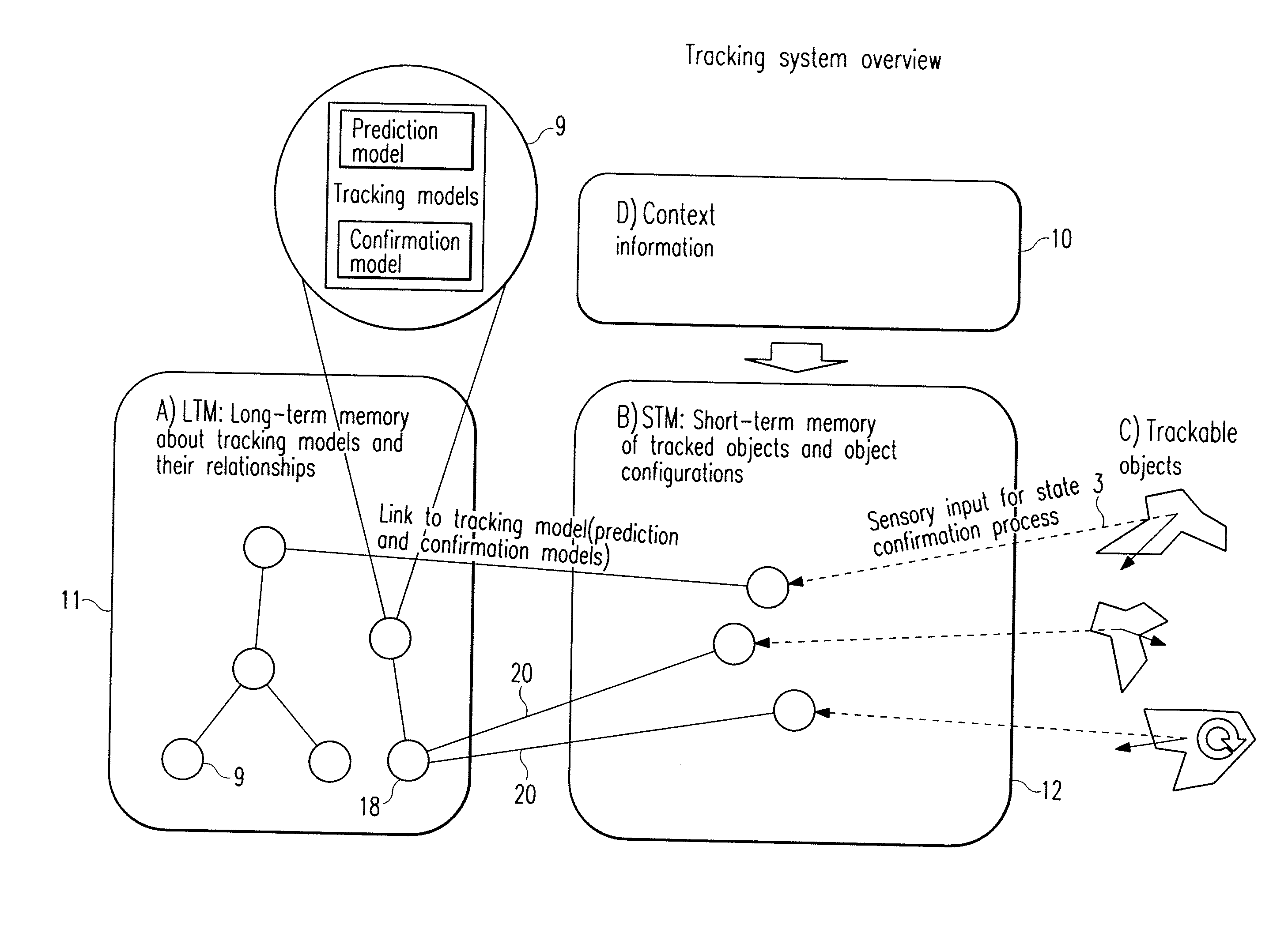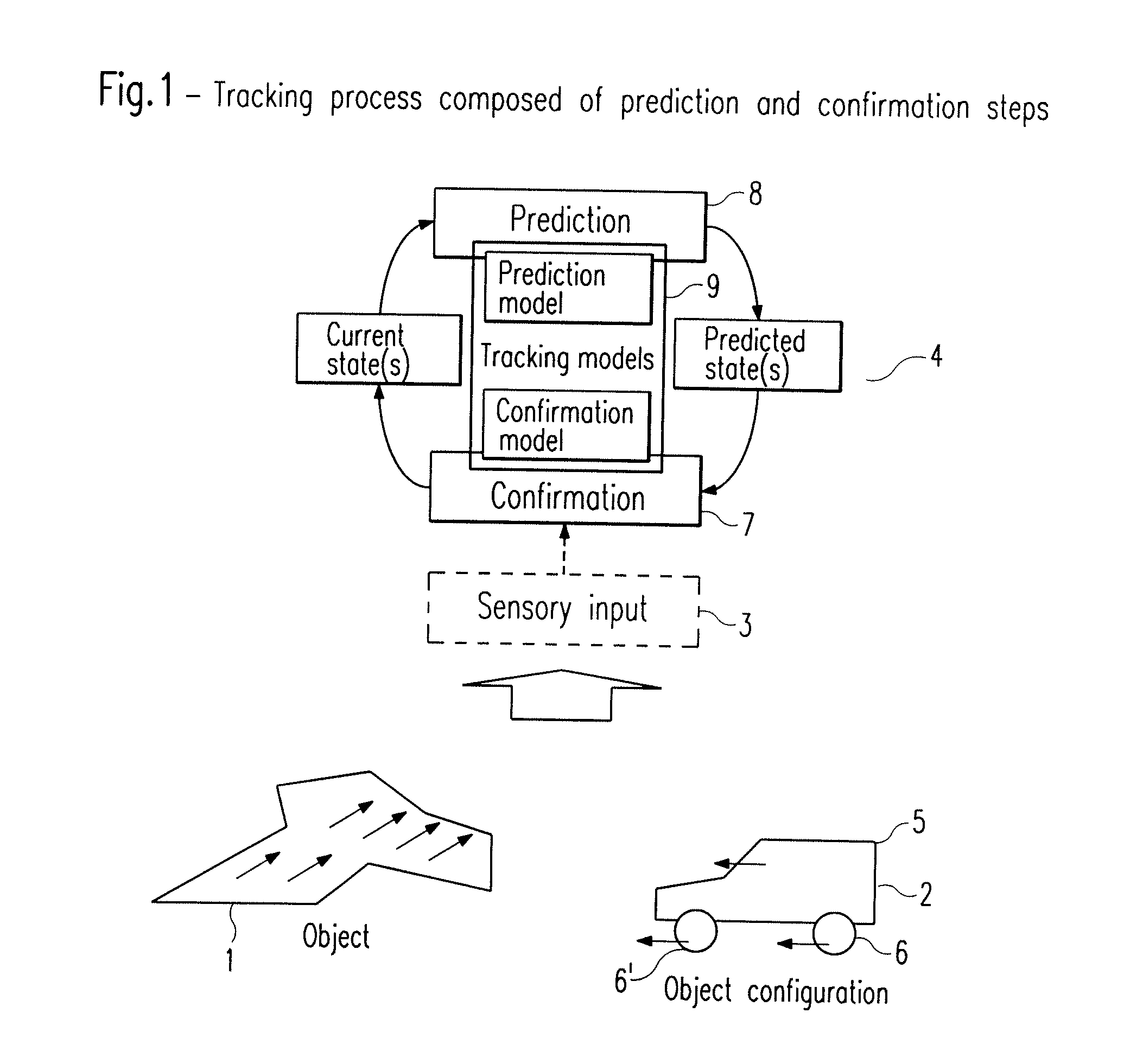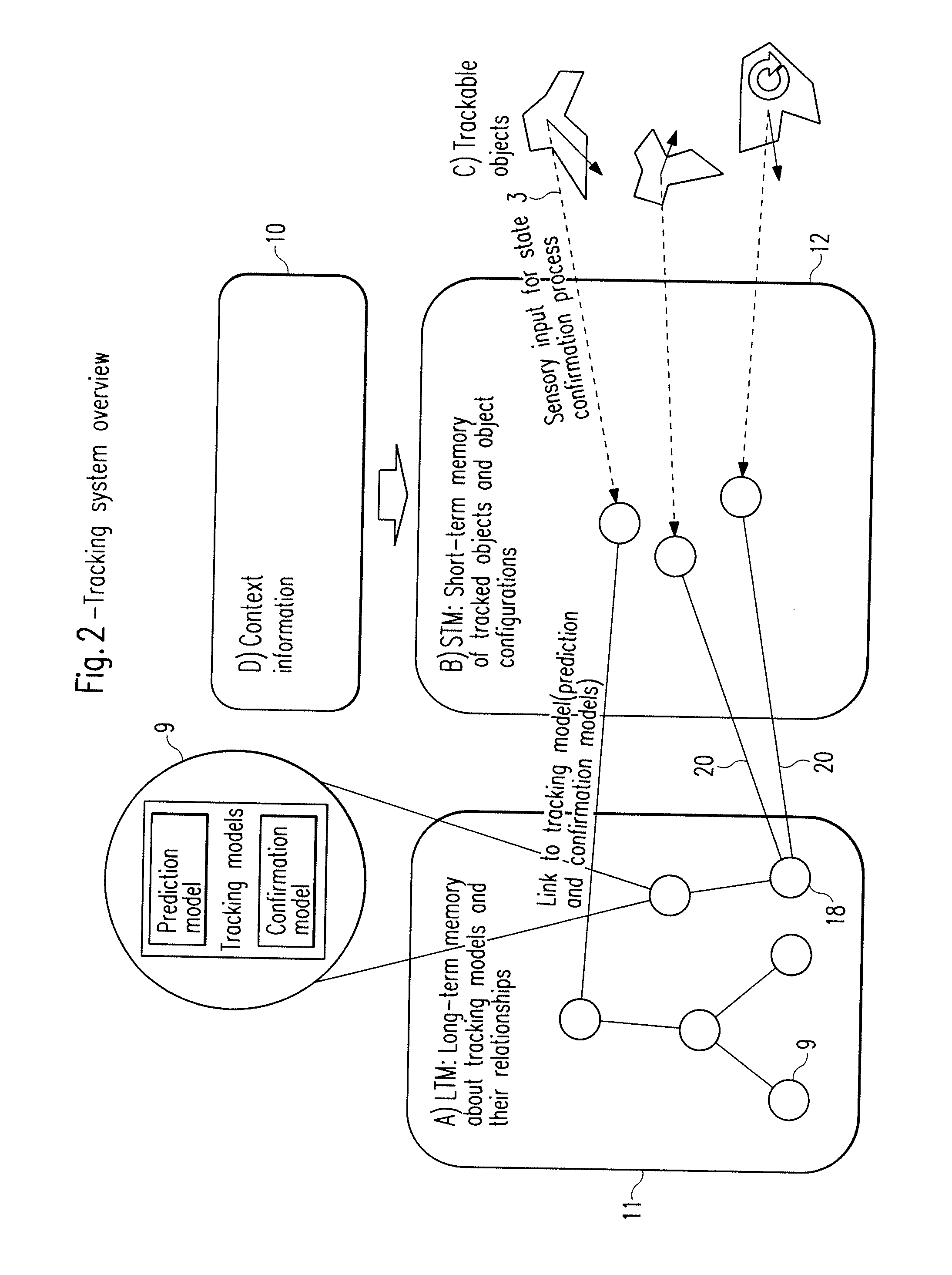Multi-object tracking with a knowledge-based, autonomous adaptation of the tracking modeling level
a multi-object tracking and knowledge-based technology, applied in image data processing, instruments, character and pattern recognition, etc., can solve the problem of not having a single tracking model, and achieve the effect of improving tracking performance and adjusting very effectively
- Summary
- Abstract
- Description
- Claims
- Application Information
AI Technical Summary
Benefits of technology
Problems solved by technology
Method used
Image
Examples
example
[0048]A specific example for a combined 2D / 3D tracking system is shown in FIG. 4. A stereo video camera 30, 31 (being an example for streaming sensors) supplies “binocular” 2D video data to the tracking system and such comprises a “left” video camera 30 and a “right” video camera 31. The tracking system (i.e. the entire system shown in FIG. 3) processes these supplied video data 30, 31.
[0049]The long-term memory 11 contains tracking model descriptions of trackers working in 2D and in 3D, i.e. a 3D tracking model 32, a left camera 2D tracking model 33 and a right camera 2D tracking model 34. The trackers 33, 34, working in 2D contain a simple, 2D ballistic prediction model to describe the position of objects on a camera image, and also apply their measurement models directly on these images to confirm the expected positions.
[0050]The 3D tracker 32 contains a ballistic prediction model working in 3D world coordinates. Its measurement model is based on the result of two lower-level 2D ...
PUM
 Login to View More
Login to View More Abstract
Description
Claims
Application Information
 Login to View More
Login to View More - R&D
- Intellectual Property
- Life Sciences
- Materials
- Tech Scout
- Unparalleled Data Quality
- Higher Quality Content
- 60% Fewer Hallucinations
Browse by: Latest US Patents, China's latest patents, Technical Efficacy Thesaurus, Application Domain, Technology Topic, Popular Technical Reports.
© 2025 PatSnap. All rights reserved.Legal|Privacy policy|Modern Slavery Act Transparency Statement|Sitemap|About US| Contact US: help@patsnap.com



